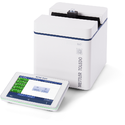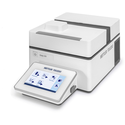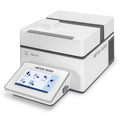This application note describes a method to determine the hydrazine content in wastewater using a UV/VIS spectrophotometer.
By downloading this application package, you will receive a PDF of the application note as well as the required data for the LabX™ UV/Vis spectrophotometry software method.
Why determine hydrazine content in wastewater?
The extensive application of hydrazine and its derivatives across various fields has resulted in their presence in waterways and industrial waste. These compounds are neurotoxic, mutagenic, and carcinogenic, posing significant risks to human health. Therefore, it is essential to quantitatively assess the hydrazine levels in wastewater.
How do you quantify hydrazine content in wastewater spectrophotometrically?
Hydrazine can be effectively quantified using p-dimethylaminobenzaldehyde. When added to a sample containing hydrazine, it reacts with the hydrazine sulfate solution in an acidic environment, producing a yellow-colored quinoid compound. The intensity of the resulting color is directly proportional to the concentration of hydrazine in the sample and can be measured at 458 nm using a UV/VIS spectrophotometer with a 50 mm pathlength cuvette.








